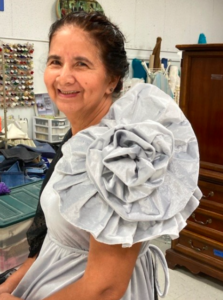By Alexus Twyman
As an everyday issue, safety is often at the forefront of people’s minds, either while commuting to work or school. In Trenton, New Jersey, various nonprofits and community-led organizations are working to address some of the contributing factors of crime and strengthen community ties in the process.
An organization hoping to create positive change is the Trenton Community Street Team, which has a mission to provide “public
safety for the people by the people” through supporting local families to end cycles of abuse.
The Trenton Community Street Team, also known as TCST, uses a variety of intervention practices to provide crucial services for communities in need. A few of these services include allocating
resources for victims of violence, creating a safe school environment for children, and providing space for community members and local officials to discuss methods for addressing responses to conflict.
Other organizations that are working to find a solution to the root causes of crime include the Mercer County-based New Jersey Coalition to End Domestic Violence, or NJCEDV, which focuses on creating a society “free from oppression, injustice, and violence,” according to its website.
Formed in 1980, originally under the name New Jersey’s Coalition for Battered Women, NJCEDV focuses on leading “collaborative community and systemic responses to domestic violence” through various initiatives to increase public awareness and provide support for survivors.
One initiative hosted by NJCEDV is the New Jersey Men of Courage Network, which has multiple branches in the northern, southern
and central regions of New Jersey.
The goal of the Men of Courage Network, as stated on its website, is to prevent domestic violence through unpacking patterns of toxic masculinity and “engag[ing] men and boys as allies” to end cy-
cles of abuse.
More recently in January, Trenton Mayor Reed Gusciora and the Trenton Police Department announced a 45% decline in homicides in January 2023.
Despite the decline in violent crime incidents, many questions remain regarding the most efficient way to curb crime throughout Trenton.
Since the death of George Floyd in May 2020, the involvement of law enforcement has come under scrutiny nationally due to accusations of racist policies and practices that occur in more segregated areas.
According to a 2021 Department of Justice Report, African Americans made up 33% of people arrested for non-fatal violent crime despite making up 13% of America’s total population.
These statistics may be explained through various systemic issues that can make people more prone to crime, such as poverty, familial relationships and unemployment.
Systemic factors are often underlooked when considering the reasons behind crime.
In more segregated and urban areas, law enforcement may be viewed as a source of contention due to the history of racial and economic discrimination. Differences in expectations of police can differ between communities.
According to the Council on Criminal Justice, a city located in a business district would be more likely to have a positive view of law enforcement compared to the residents of an urban neighborhood.
Differences in perceptions of police not only vary by economic standing but also by racial background. One example is the history of “stop-and-frisk,” a tactic commonly used to find potentially dangerous weapons. These searches are typically carried out in cities deemed high-crime neighborhoods that often have a higher proportion of people of color, the Associated Press reported.
Violence prevention groups, such as the New Jersey Men of Courage Network, strive to dismantle the structures in place that allow for domestic violence to occur. These programs aim to start a conversation and uplift unheard voices through providing a safe space for many in their local communities.
Not only can crime prevention initiatives help ensure safety in local communities, but they also serve to reinforce and improve community bonds.


